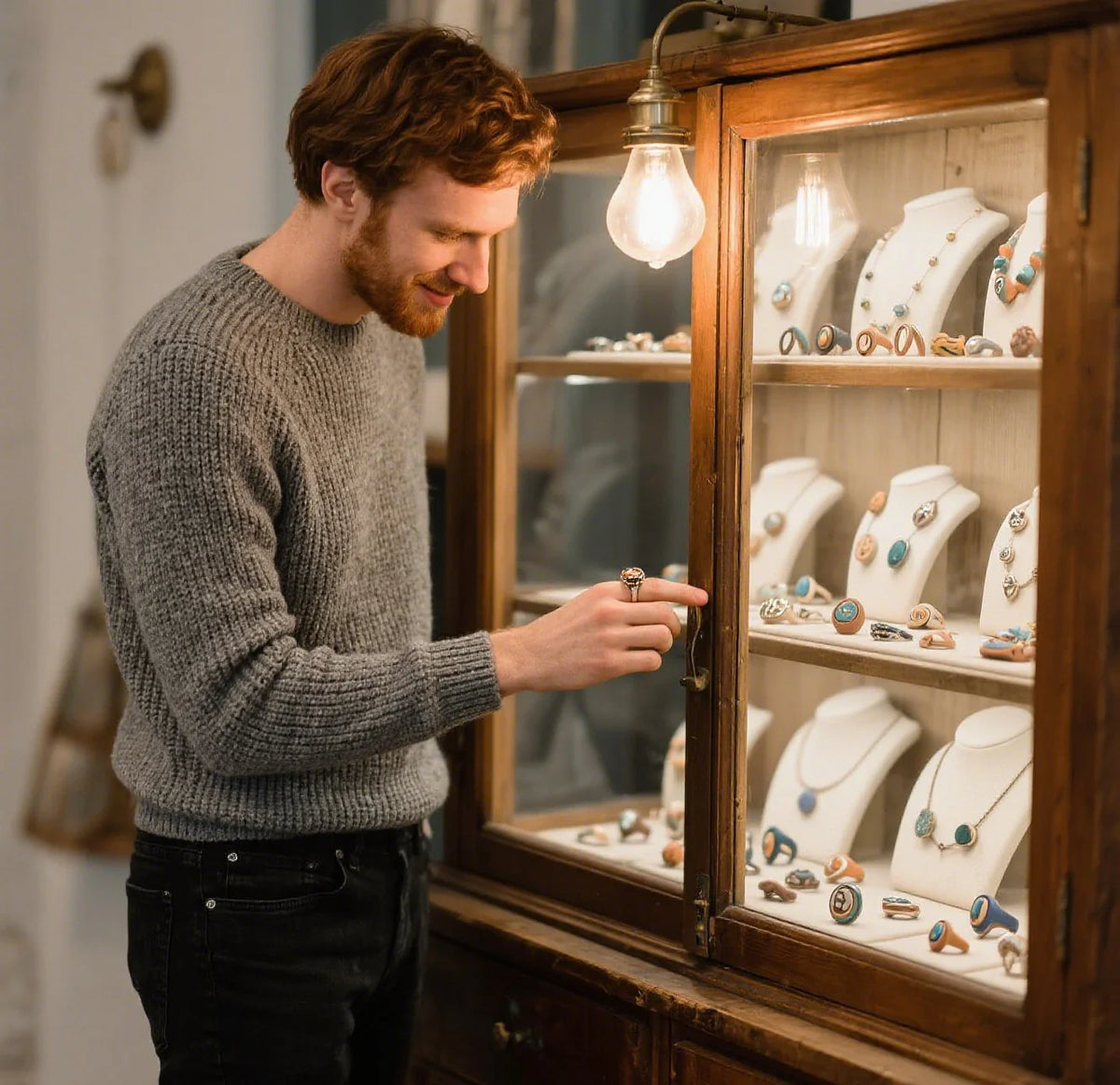
Polymer Clay Jewelry: A Simple Guide to Crafting Unique Accessories
|
|
Time to read 3 min
|
|
Time to read 3 min
If you scroll through social media or head to local craft markets, it’s hard to miss handmade polymer clay jewelry. These earrings, necklaces, and rings come in every style you can picture—bold, simple, bright, or quiet. But what draws people in isn’t just the look. Polymer clay itself is easy to work with. You don’t need much space, and the materials aren't expensive. That low barrier pulls in beginners and expert artists alike.
Polymer clay jewelry took off because people wanted jewelry that felt personal. Anyone can buy something at a big store, but when you roll out your own clay and pick your colors, it means more. Plus, trends change. Right now, people want to support small makers, shop local, and get something that matches their style. With polymer clay, you can make one-of-a-kind earrings to match your favorite shirt, or whip up gifts for friends that don’t just look like everything else out there.
Another reason it’s popular—mistakes aren’t expensive. If something turns out wrong, you can start again without much waste. Even kids can get creative with this medium. Many people start as a hobby but grow into selling their pieces online or at fairs once they get the hang of it.
Here’s the thing: you don’t need fancy training or a big budget to make your own polymer clay jewelry. Most people start at their kitchen tables. You just need the right tools and a little patience.
First, pick up some basic supplies: polymer clay blocks (brands like Sculpey or FIMO work well), a smooth surface, a rolling pin, sharp blades, and something to poke holes for earrings. You’ll want some earring posts, hooks, or maybe necklace chains too. Most arts and crafts stores carry what you need. For the oven, any regular kitchen oven will bake the clay. Just follow the package heat directions closely—usually, it’s around 265-275°F.
Condition your clay by kneading it with your hands until it gets soft and warm. Then, roll it out and cut your shapes. You can use cookie cutters, bottle caps, or shape by hand. After that, poke holes where needed. Arrange the clay pieces on a lined baking tray, and bake as the package says (usually about 15-30 minutes, depending on the thickness).
Once baked and cooled, some people sand the edges for a smoother finish. Finally, attach the earring posts, jump rings, or chains. That’s it. The process is simple, but you can take it as far as you want—mixing colors, adding sparkles, or trying different shapes.
If you’re not sure where to start, plenty of free tutorials online walk through the basics. Some local art studios even run beginner classes, so you can pick up skills in person.
When you’re new to polymer clay, a few things can trip you up. If you skip the clay conditioning step, your finished jewelry might break or crumble. Always knead the clay until it feels smooth.
Overbaking or underbaking the clay is another problem. If you bake at too high a temperature, the clay can burn or bubble—too low, and it stays soft. Use an oven thermometer if you can since home ovens aren’t always accurate.
Another rookie mistake is forgetting to clean your work surface. Dust, crumbs, and pet hair will stick to the clay, even after baking. Wipe your table, wash your hands often, and use wet wipes if needed.
Finally, don’t rush the assembly. Let pieces cool down fully before handling. And when gluing posts or putting together pieces, less glue is better than a goopy mess. If a piece cracks, don’t worry—sometimes you can glue it back, and you’ll know what to watch for next time.
Everyone makes mistakes at first, so don’t let that stop you. Most people’s first pieces aren’t perfect, but each try gets easier.
Ask anyone who makes polymer clay jewelry, and you’ll hear the same thing—it’s more than just a craft. These pieces become a way to share your favorite colors, moods, and stories. And you don’t have to stick with trends. Want tiny pizza earrings? Or bright swirls that only you would wear? You can do it.
Some people love the meditative part of shaping and rolling the clay. Others get a kick from giving friends something handmade for birthdays or holidays. Polymer clay jewelry has grown into a fun side hustle for many. There are plenty of online shops run out of homes, with people selling earrings, pendants, and even pins.
But it’s also about community. Many crafters use social media to support each other, share ideas, or swap tips. At local classes, people swap clay, show off new styles, or just chat about what went wrong—or right. You don’t need to be an artist. The main thing is to make something you would want to wear.
If you’re thinking about starting, don’t just admire other people’s work. Give it a try—even if your first batch turns out wonky. The fun of polymer clay jewelry is that anyone can do it. And once you try, you’ll realize there’s no wrong way to make something that feels like you. Sometimes, simple shapes and basic colors become your signature.

